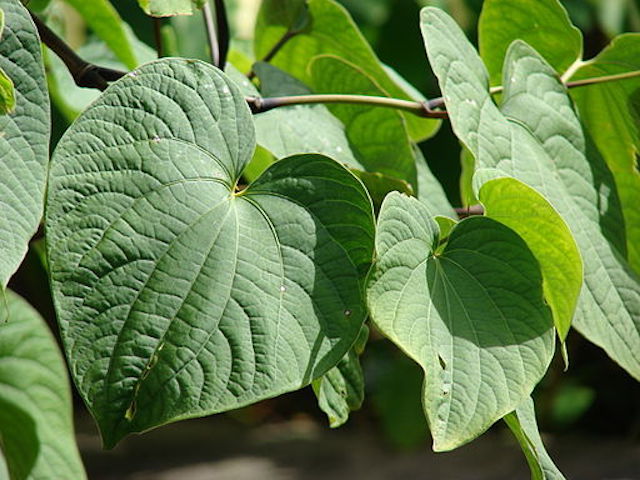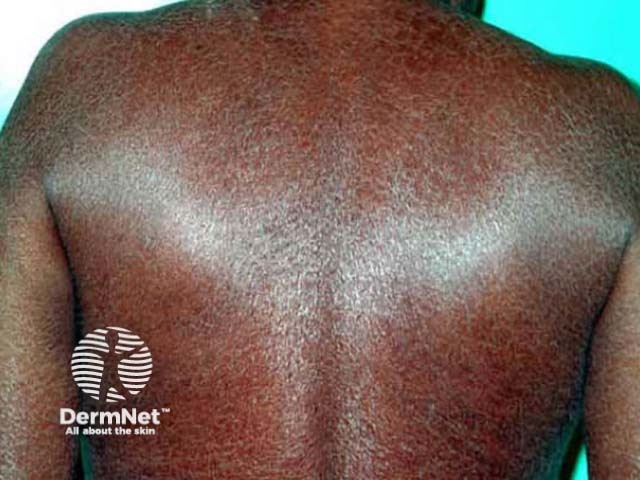Main menu
Common skin conditions

NEWS
Join DermNet PRO
Read more
Quick links
Author: Georgina Harvey, Dermatology Registrar, Adelaide, Australia. DermNet New Zealand Editor in Chief: Hon A/Prof Amanda Oakley, Dermatologist, Hamilton, New Zealand. Copy editor: Maria McGivern. March 2017.
Introduction - kava Introduction - kava dermopathy Demographics Causes Clinical features Diagnosis Differential diagnoses Treatment Outcome
The kava plant is a member of the black pepper family (Piper methysticum) that is traditionally used in the South Pacific to make a psychotropic beverage consumed in cultural ceremonies and also socially — the drink is also called kava.
Kava is made by infusing the dried roots of the kava plant in water, or less commonly, in coconut milk.

Kava leaves
Kava root
Preparing kava
Kava dermopathy is a skin condition that occurs in patients who regularly consume kava [1]. In Fiji, kava dermopathy is known as kanikani [2], while in Australia it is also known as crocodile skin [4].

Acquired ichthyosis in kava drinker
Kava dermopathy occurs in people who are regular or heavy consumers of kava [2,3].
It most commonly occurs in the South Pacific and the Indigenous population of northern Australia [4].
The cause of kava dermopathy is unknown; however, there are many hypotheses including [2]:
Kava dermopathy is usually a clinical diagnosis, taking into account the physical features and the history, including a history of regular kava consumption, in addition to the resolution of the rash on the cessation of kava consumption [4].
Other ichthyotic disorders may appear similar to kava dermopathy. Ichthyotic disorders can be distinguished based on the patient’s history.
Inherited ichthyosis will usually occur at a much younger age and may be congenital (eg, ichthyosis vulgaris and recessive X-linked ichthyosis).
Other causes of acquired ichthyosis include [5]:
Kava dermopathy clears up when the consumption of kava is stopped [3,4].
General measures to manage the rash include:
Ongoing kava consumption will result in persistence and likely progression of kava dermopathy.